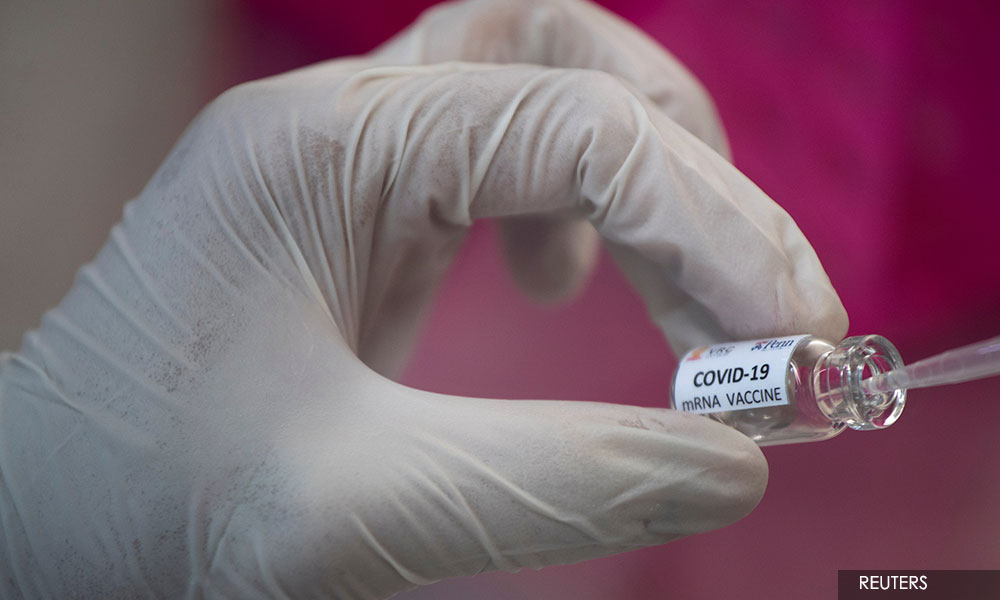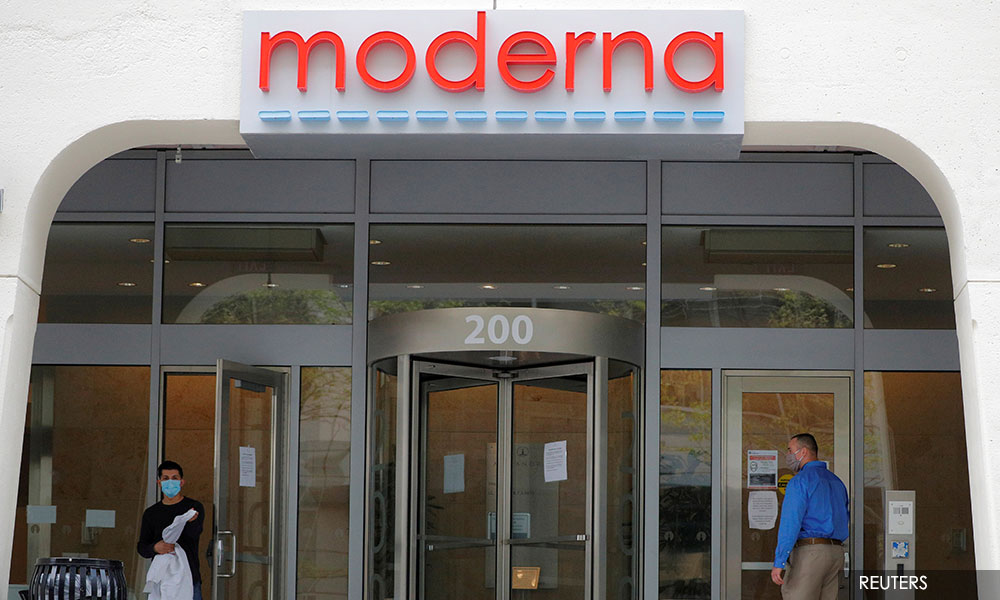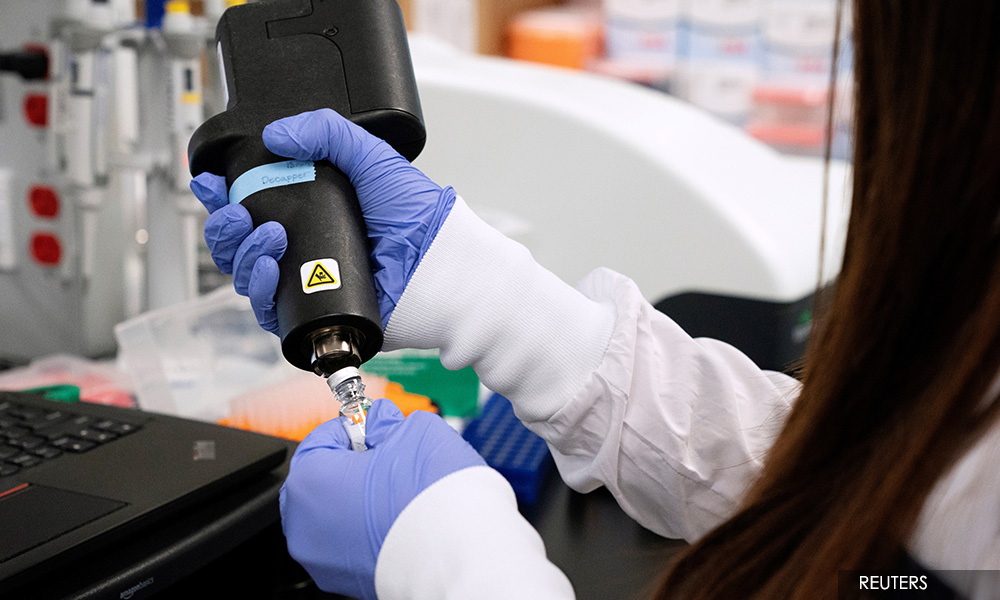COMMENT | The Covid-19 pandemic has caught virtually every nation unprepared. The Global Health Security Alliance study in 2019 found that the pandemic preparedness plans of the majority of nations fell deplorably short.
Notwithstanding, the scientific community has risen to the challenge and made major inroads towards understanding the SARS-CoV-2 virus.
Apart from the public health measures of wearing face masks, physical distancing, personal and community hygiene, avoiding the 3Cs (crowded places, confined spaces and close conversations), meticulous attention to the quartet of test-trace-isolate-support, accurate diagnostics, and safe and effective therapeutics, we critically need Covid-19 vaccines to crush the pandemic curve and end this global health crisis.
The World Health Organisation (WHO) and the Chinese health authorities first announced to the world the discovery of a novel coronavirus, known as 2019-nCoV on Jan 9.
The Chinese authorities shared the full sequence of the coronavirus genome on Jan 11 and 12. Sequencing the genome of SARS-CoV-2 is crucial for the development of specific diagnostic tests, potential therapeutics and candidate vaccines.
The first vaccine trials in humans began in March and there are now 54 candidate vaccines in various phases of clinical trials. Of these, 12 are now in Phase 3 clinical trials and six vaccines have obtained national emergency use authorisation (EUA).
This is remarkable, considering the average time required to develop a vaccine from the preclinical phase to licensing for use, is at least 10 years. The history of vaccines also informs us that, of the potential vaccines that make it into the pre-clinical phase, only seven percent are successful, while the odds of licensing for use is 20 percent, if they make it into clinical trials.

The science of genetic vaccines is a major breakthrough in the development of Covid-19 vaccines. There is no precedent of mRNA vaccines in our historical portfolio of vaccines.
The technique involves introducing a select mRNA sequence which codes for the coronavirus spike protein into the vaccine. The vaccine first makes the spike protein, which acts as the antigen which then triggers the proliferation of protective antibodies to neutralise it.
Pfizer and Germany’s BioNTech drugmakers were the first to demonstrate that their vaccine was 90 percent efficacious. During their second announcement on Nov 18, they said that their coronavirus vaccine was 95 percent effective and had no adverse effects following immunisation (AEFI).
There were only eight Covid-19 cases (one severe) in the vaccine group, versus 162 cases in the placebo group (nine severe). They will next file to the Food and Drug Authority (FDA) for EUA.
There is a lot of fake news on social media about the Moderna vaccine. Like Pfizer, they utilise the mRNA technology. The US government invested US$1 billion in the Moderna research in partnership with the National Institute of Health (NIH).
Their pre-clinical studies showed that the vaccine protected monkeys from the coronavirus. In March, their scientists were the first to put the Moderna candidate vaccine into human trials.
Since July, they have tested 30,000 volunteers in their Phase 3 clinical trials. On Nov 16, Moderna announced their preliminary analysis of their clinical trial, which showed that the vaccine was 94.5 percent efficacious.
Out of 95 participants who got Covid-19, 90 were from the placebo group and five in the vaccine group. Another promising result from the Moderna trial was that the vaccine appears to protect participants from severe Covid-19 disease. All 11 volunteers who developed the disease severely were from the placebo group (not vaccinated).

The trial will continue and in the interim, they plan to submit to the FDA an application for EUA. Moderna has entered into deals with several countries, including Canada, Japan and Qatar, to supply the vaccine if it is approved for EUA. The US government alone awarded the company an additional US$1.5 billion in exchange for 100 million doses.
The other candidate vaccines using mRNA technology are India’s Zydus, which is a skin patch vaccine, Curevac Germany (in collaboration with Elon Musk’s Tesla), both in Phase 2 trials and Imperial College London (Morning Side Ventures) in Phase 1/2 trials. There are nine others in Phase 1 trials.
The next group is viral vector vaccines. Some 12 vaccine candidates in clinical trials use viruses to deliver coronavirus genes that then instructs our human cells to make SARS-CoV-2 protein. This stimulates our bodies to make protective antibodies as an immune response.
CanSino Biologics in China employs the adenovirus Ad5 as the carrier virus. It is now in Phase 3 clinical trials in Saudi Arabia, Pakistan and Russia. The Chinese military approved its use as a “specially needed drug” among its soldiers.
The Russians used the Ad5 and Ad26 as its carrier virus in its Sputnik5 vaccine. Published scientific data is scarce but it claims 92 percent efficacy rate, based on 20 Covid-19 cases among the trial participants. They have expanded their trial participants to 40,000 in Russia, Belarus, UAE, Venezuela and more recently, India, which has 9 million cases and 130,000 deaths.
Johnson and Johnson have developed Ebola vaccines with Ad26 and are using it for their candidate coronavirus vaccine. Initially a single-dose vaccine, they are now testing it with a two-dose regime and 60,000 volunteers have been enrolled for their study.
In October, the trial was paused for 11 days due to a suspected adverse reaction, which has since been cleared. The US and EU governments have made bookings of 100 and 200 million doses respectively.

AstraZeneca and the University of Oxford have developed a vaccine based on the chimpanzee adenovirus. The US government awarded them US$1.2 billion in lieu of 300 million doses if successful.
Phase 3 trials are ongoing in England, India (known as Covishield), Brazil, US and South Africa. The EU has made a reservation of 400 million doses. The AstraZeneca trial was paused for seven days in September, when a volunteer was diagnosed with transverse myelitis, which has since been cleared as an unrelated event.
The third group contains viral proteins and no coronavirus genetic material. The coronavirus proteins or fragments are packed onto nanoparticles.
The US-based Novavax has received funding from the US government and the Coalition for Epidemic Preparedness and Innovations (Cepi). They launched their Phase 3 trials in England with 15,000 volunteers. They have an agreement with Serum Institute India to manufacture two billion doses per year.
In August, the Vector Institute, a Russian biological research centre, registered EpiVacCorona for a Phase 1/2 trial. In October, Russia granted regulatory approval for early use, the second after Sputnik5.
Both vaccines received approval for early use before a Phase 3 trial to demonstrate that it was safe and effective! Eighteen other candidate vaccines utilise this protein-based technology.
The fourth group is the tried and tested vaccine method using inactivated and attenuated viruses. Chinese state-owned Sinopharm has two candidate vaccines using inactivated coronavirus as the antigen.
They launched their Phase 3 trials in Peru, Morocco and UAE. Both their vaccines are approved for limited use in China and UAE. None of the 56,000 people immunised with Sinopharm vaccines and who travelled abroad have been infected with Covid-19. A total of 100,00 have been immunised with no major AEFI. Sinopharm is gearing for manufacturing up to one billion doses per year.
The sixth vaccine approved for limited use in China is the inactivated CoronaVac from Sinova Biotech. Phase 3 trials have commenced in Brazil, Indonesia and Turkey. Seven other candidate vaccines employ this vaccine technique.
The Murdoch Children’s Research Institute in Australia is conducting a Phase 3 trial to study if the BCG vaccine is protective against the coronavirus
The explosive and brutal pace of the pandemic has claimed 1.3 million lives and registered 55 million cases. Covax, an initiative of the WHO, Gavi, the Vaccine Alliance and Cepi, has the largest portfolio of 18 vaccines with diverse actions to end the pandemic as soon as possible.
They crystallise the collaborations between governments, global health agencies, vaccine manufacturers, scientists, private sectors, civil societies and philanthropists to ensure equitable access to diagnostic tests, therapeutics and vaccines irrespective of national income status.
They are at the frontline in the research, development, manufacture and pricing of vaccines. Their tagline is: “No one is safe unless everyone is safe.” They endeavour to ensure equitable access to Covid-19 vaccines to all countries.
This is probably the best investment and an insurance policy for any nation to ensure adequate vaccine supply at affordable pricing for its citizens. Thus 78 high-income nations and 92 low and middle-income countries have signed the agreement.

We are still unsure of the status of Malaysia. The ministers have been very ambivalent in their responses. As an investment, Malaysia is required to deposit at US$10 per dose (two doses per pax) for 20 percent of its population as starters. I doubt any payment has been made towards this end.
And we, the rakyat, might lose out on a golden opportunity to get access to 18 potential vaccines from Covax at best and affordable prices.
Instead, we’ve seen politicians and business leaders rubbing shoulders and inking deals on the side with Chinese vaccine manufacturers. This is limiting ourselves to just one type of vaccine, which may not turn out to be efficacious nor safe in the long run compared to the 18 potential vaccines in the Covax portfolio.
Let us be upfront and call a spade a spade. In my opinion, many politicians and business leaders are hoping to reap massive profits from the many vaccine deals that are being negotiated on the side.
Let us be clear that our national coffers are drying up. We must secure the best deals directly with Covax or directly from the vaccine manufacturers, without the interference of middle parties who will be walking to the bank with insane millions in profits.
We can crunch the numbers to make it more obvious:
Population of Malaysia = 32 million
The first deal is to immunise 20 percent of our population (healthcare workers/the elderly/high-risk with co-morbidities) = 6.4 million
The immunisation regime requires two doses per pax = 12.8 million doses
If the middle party sells the vaccine to the government at a profit of RM10 per dose, then the middle party will make a profit of, 12.8 million X RM10 = a cool RM128 million!
This is the type of rent-seeking and leakages that the nation can do without, especially when its fiscal circumstances are in dire straits and where the GDP has contracted by 17 percent in the second quarter.
The Ministry Of Finance Incorporated should be directly negotiating the deals with Covax or the vaccine makers, without the interference of any middle parties.
An advisory board of experts, key opinion leaders, economists and scientists may counsel the government on the best vaccine options with the best deals to best protect the nation and the interests of the rakyat.
DR MUSA MOHD NORDIN is a consultant paediatrician and neonatologist and clinical professor of paediatrics at KPJ University College. Email: [email protected]
The views expressed here are those of the author/contributor and do not necessarily represent the views of Malaysiakini.

